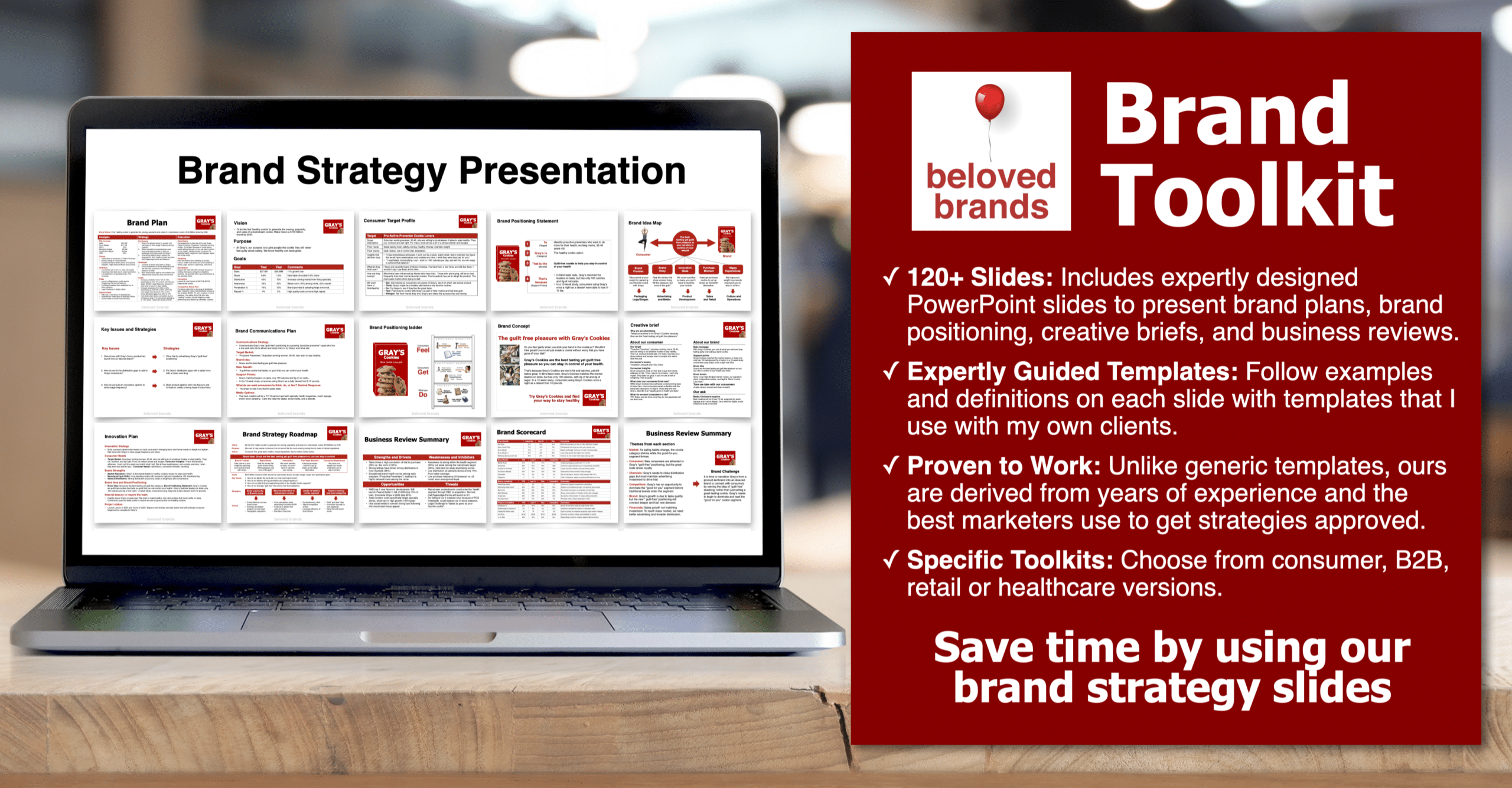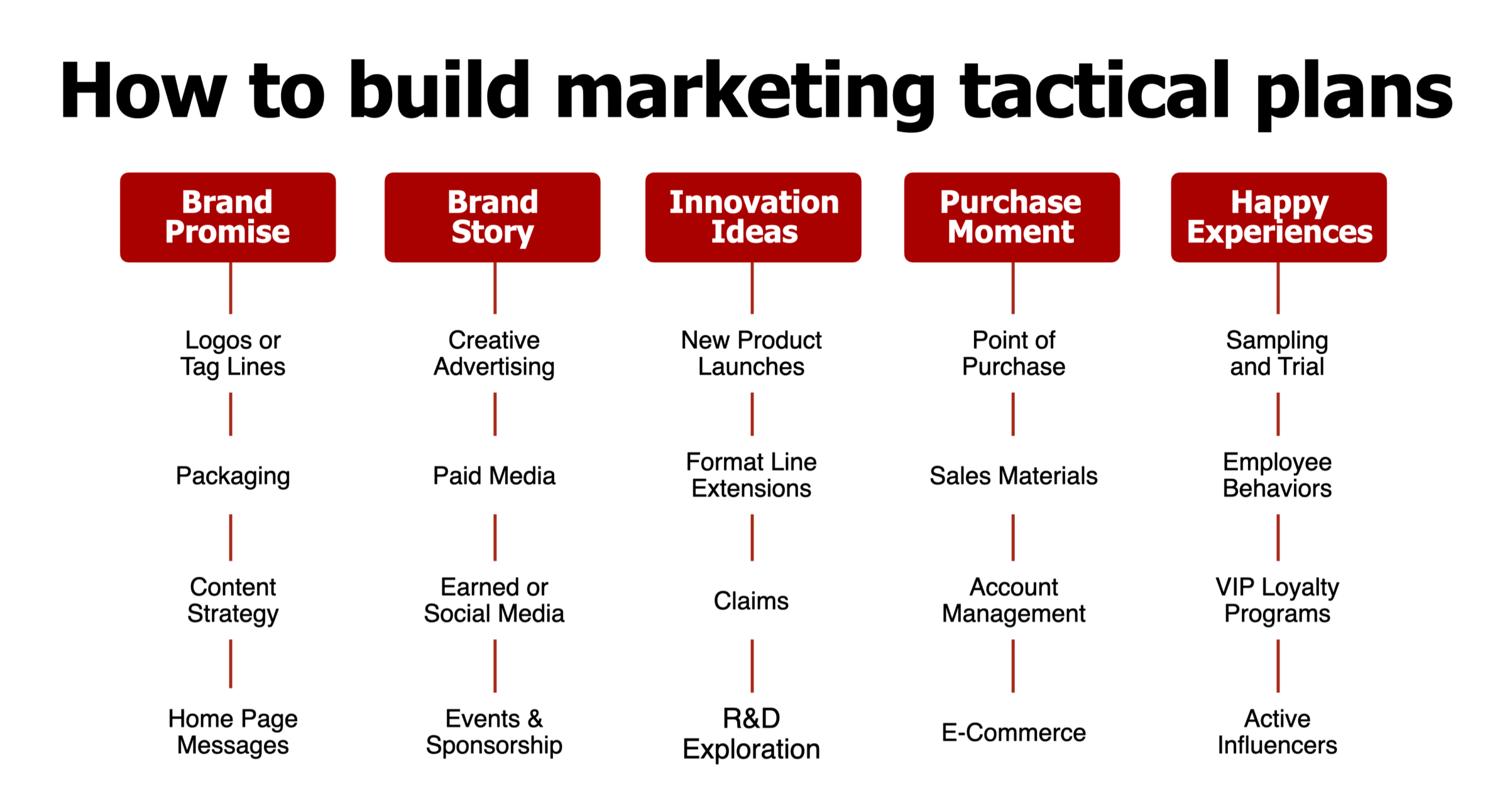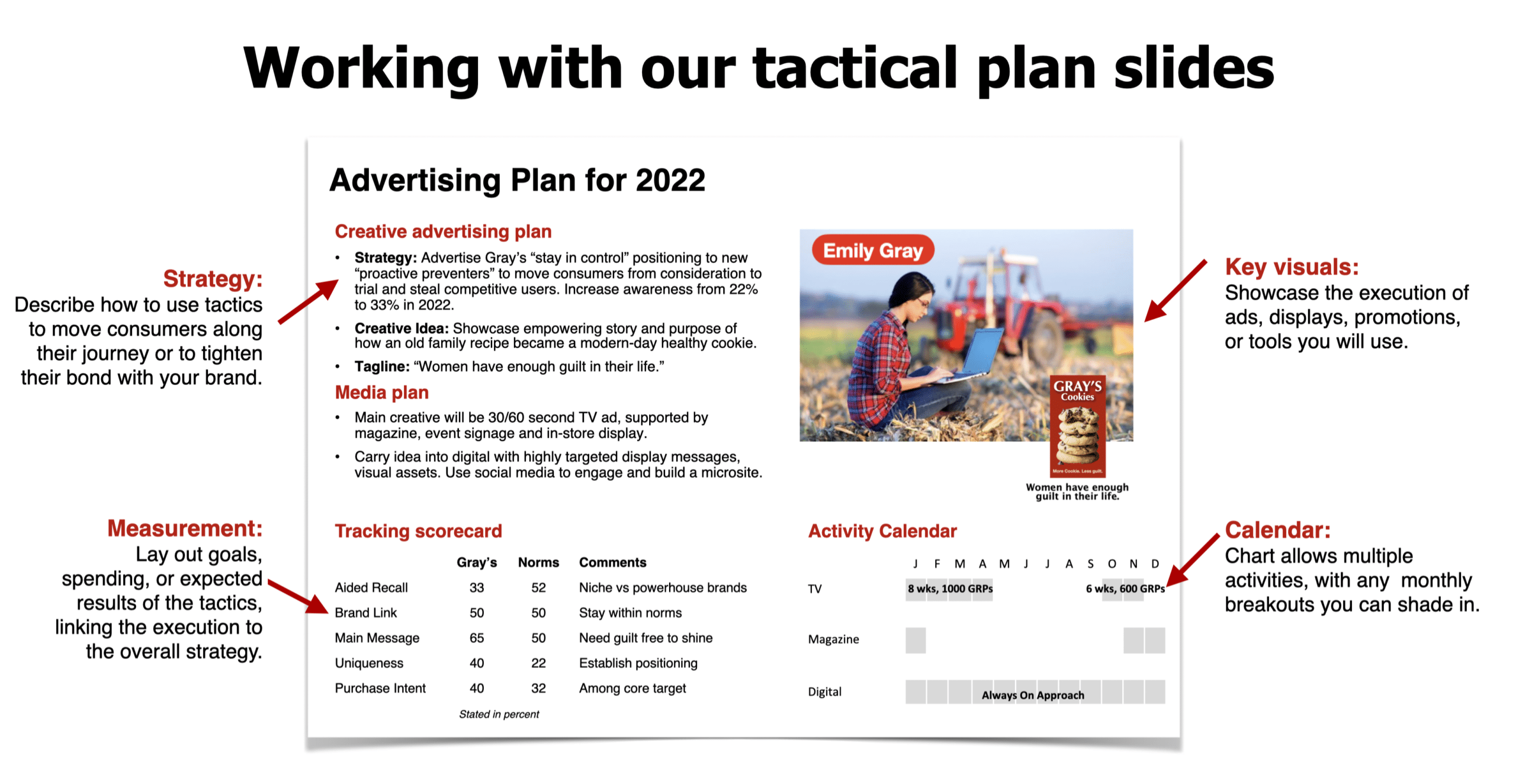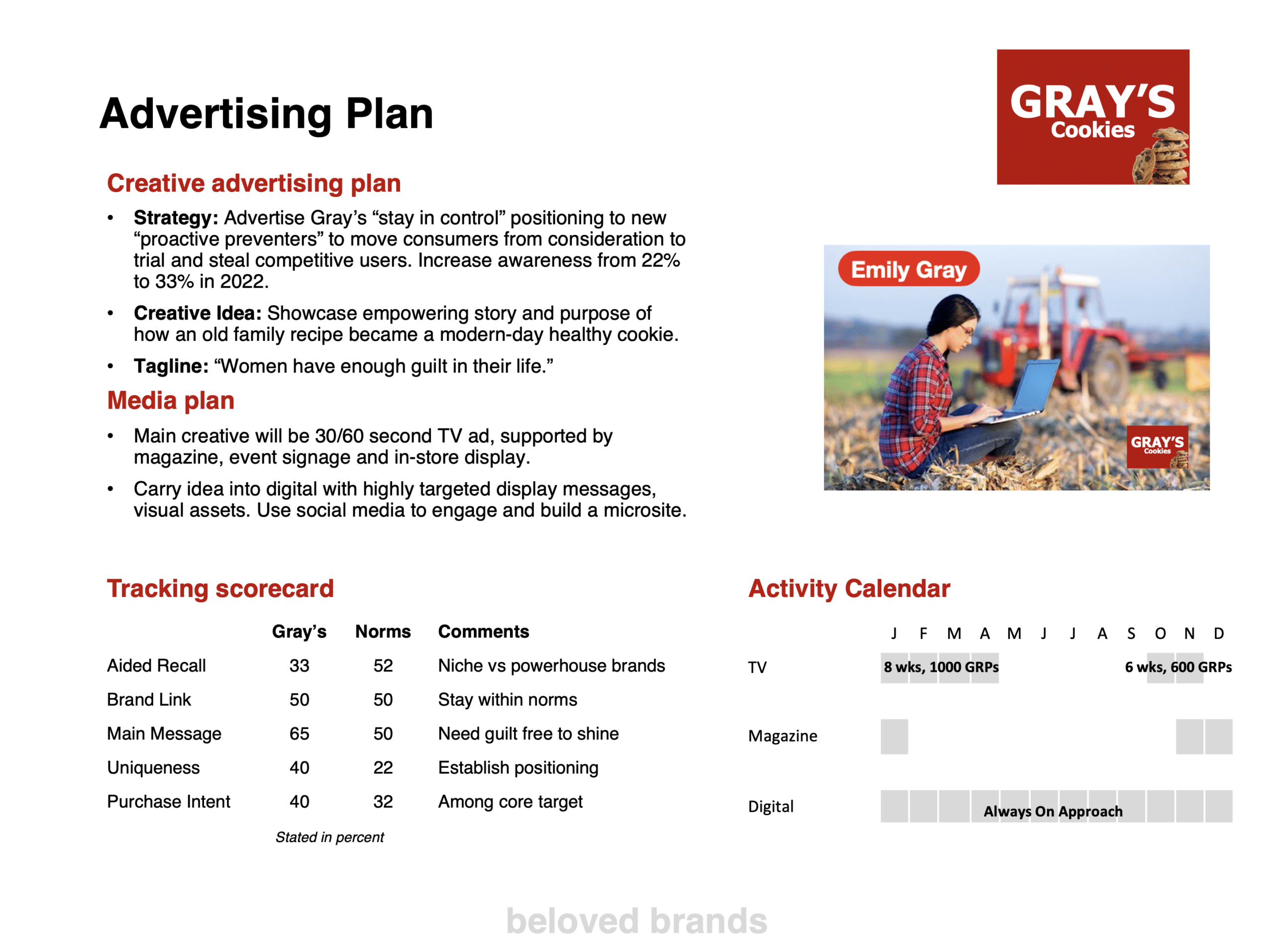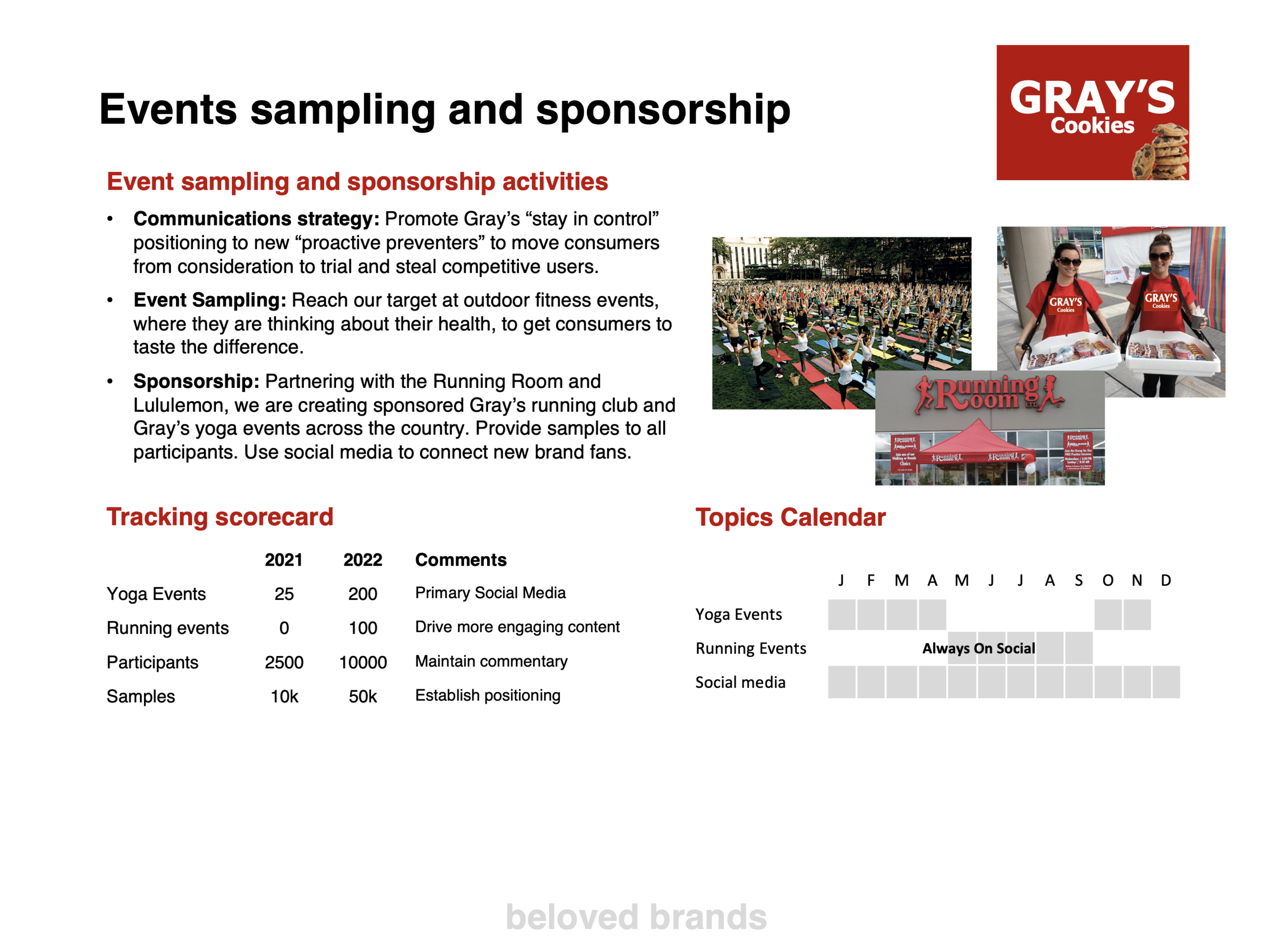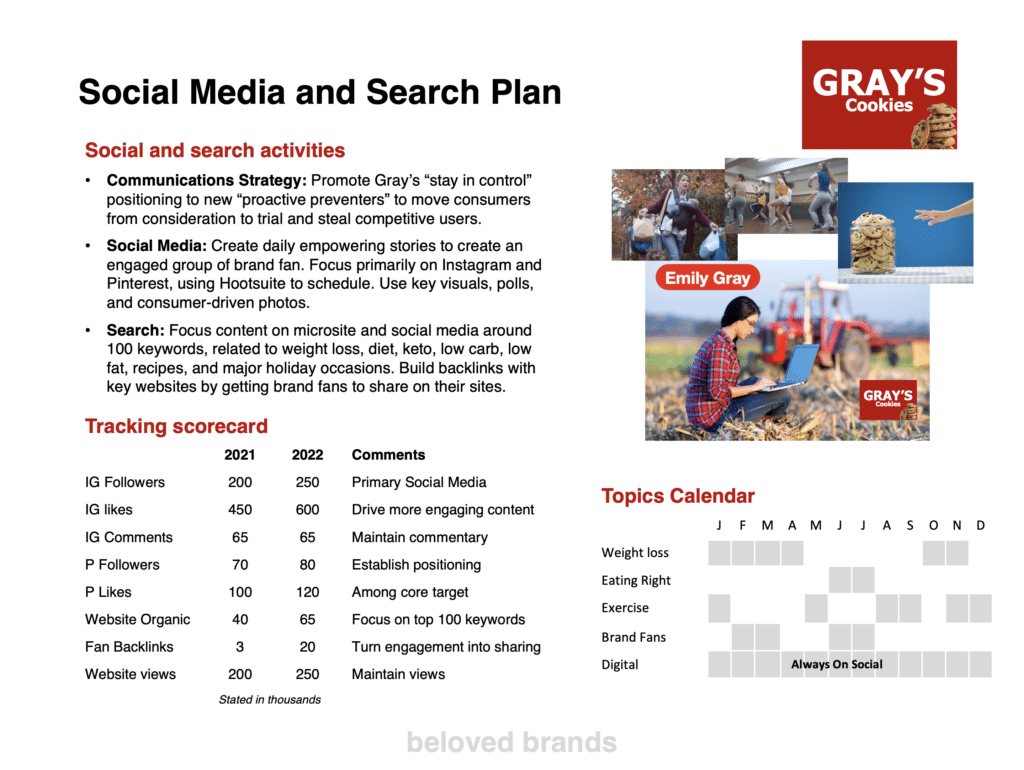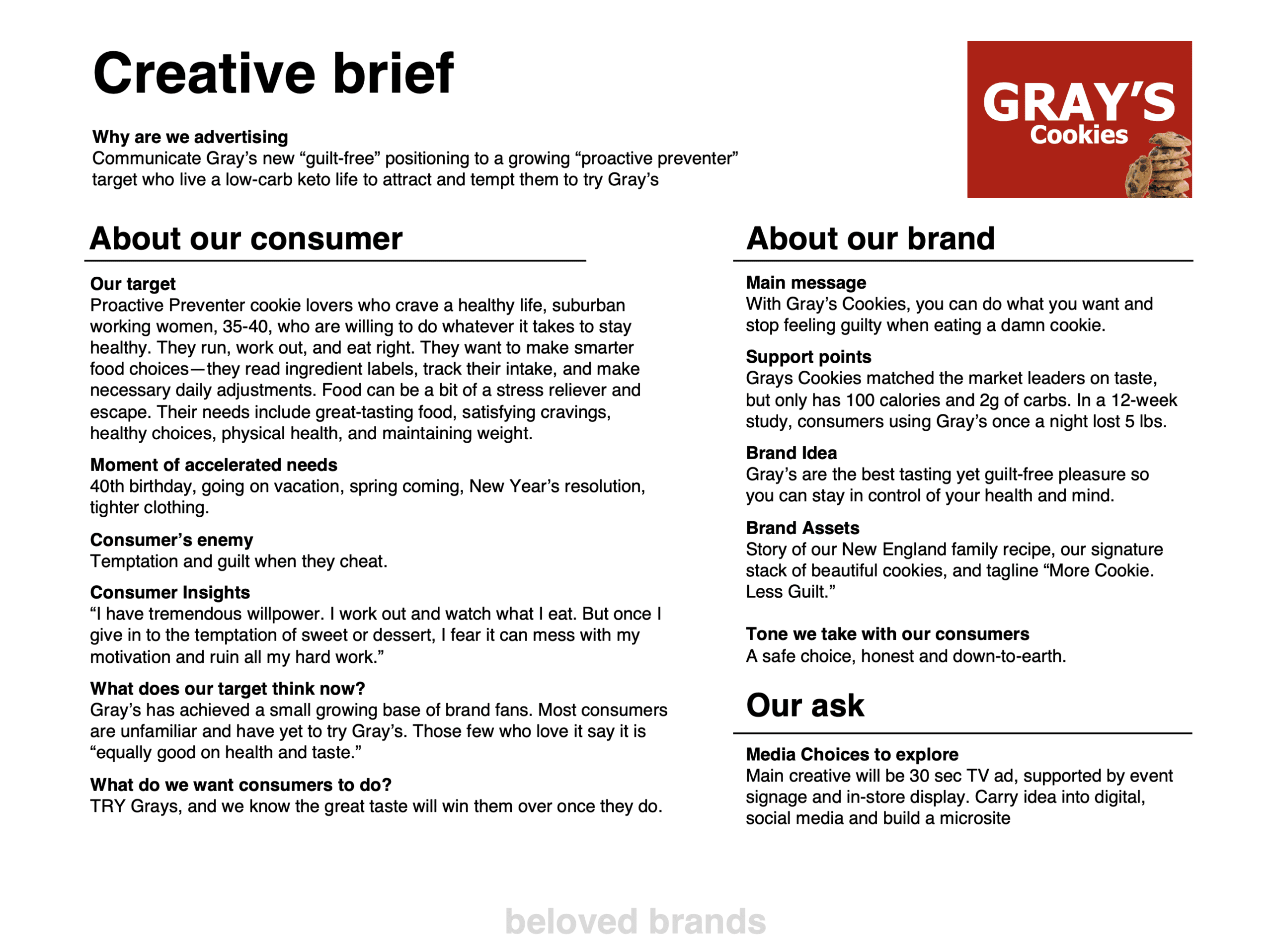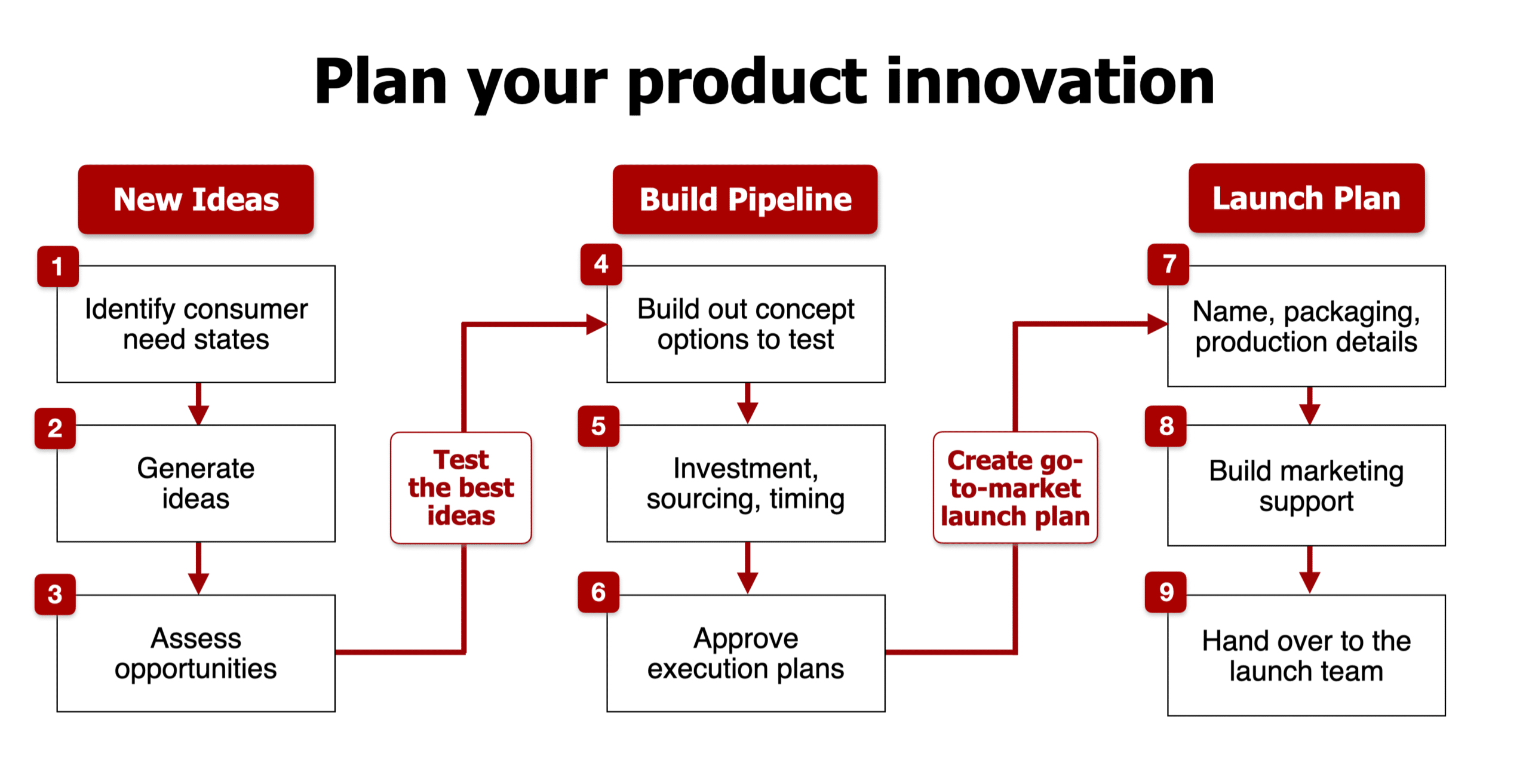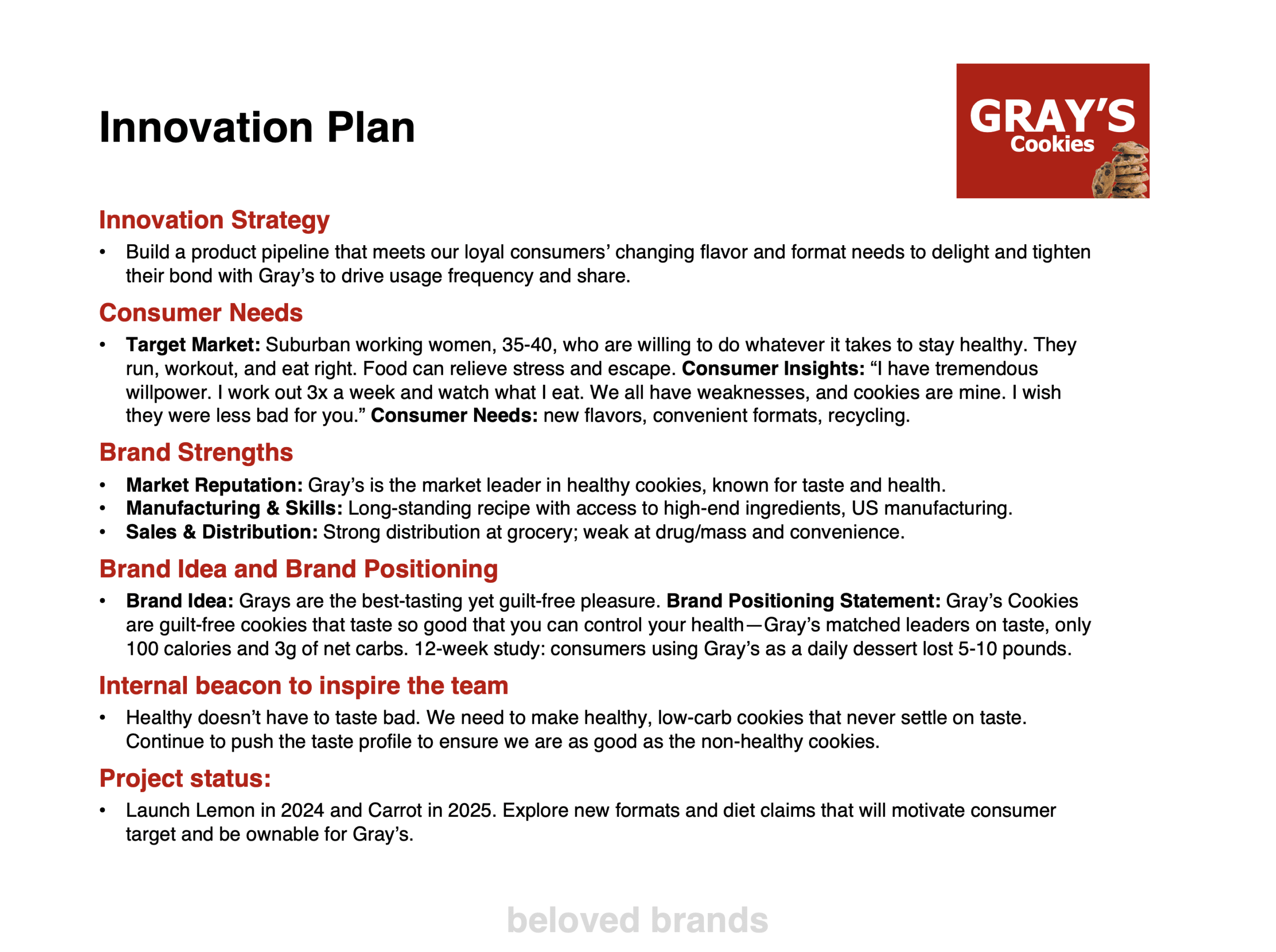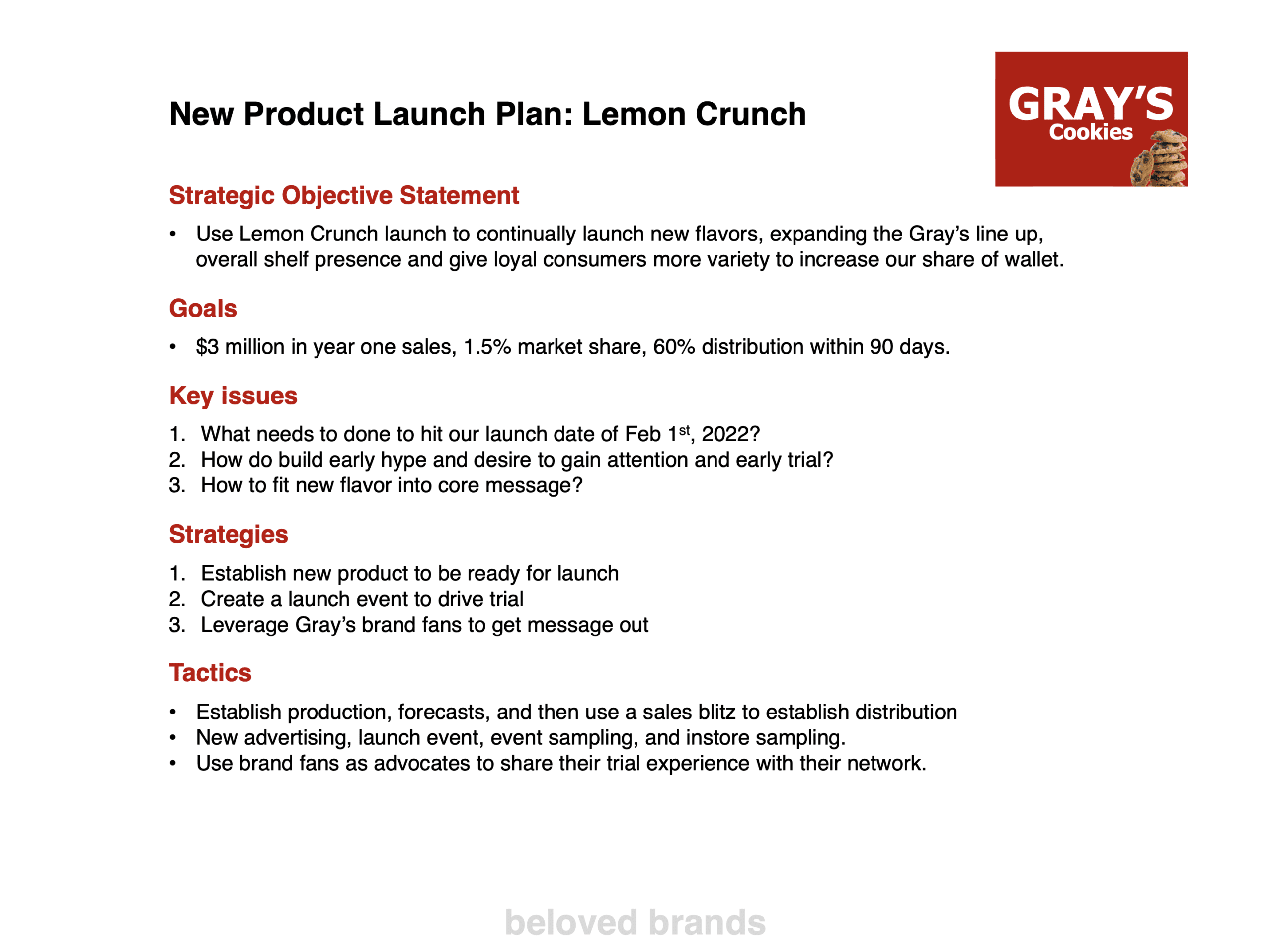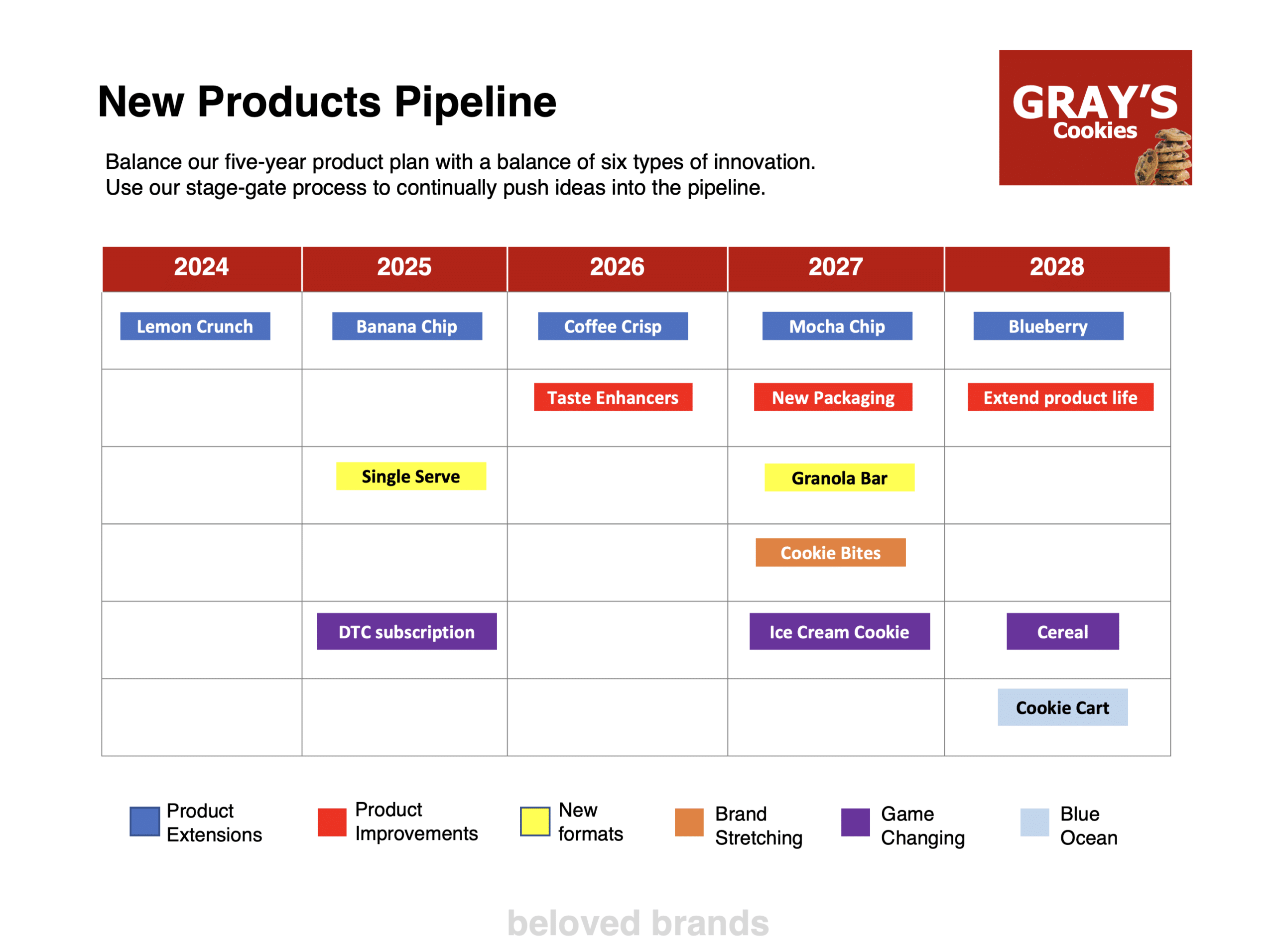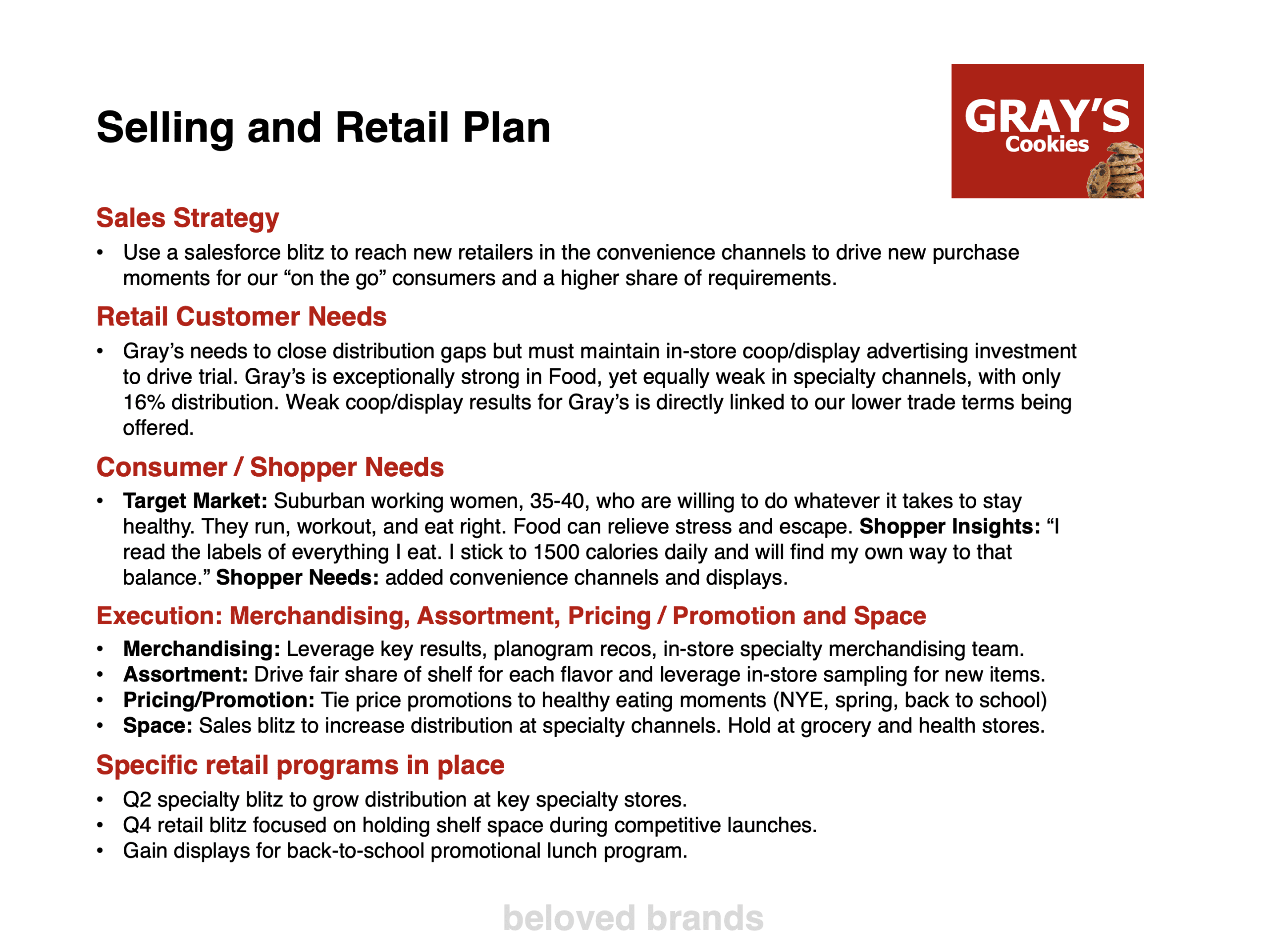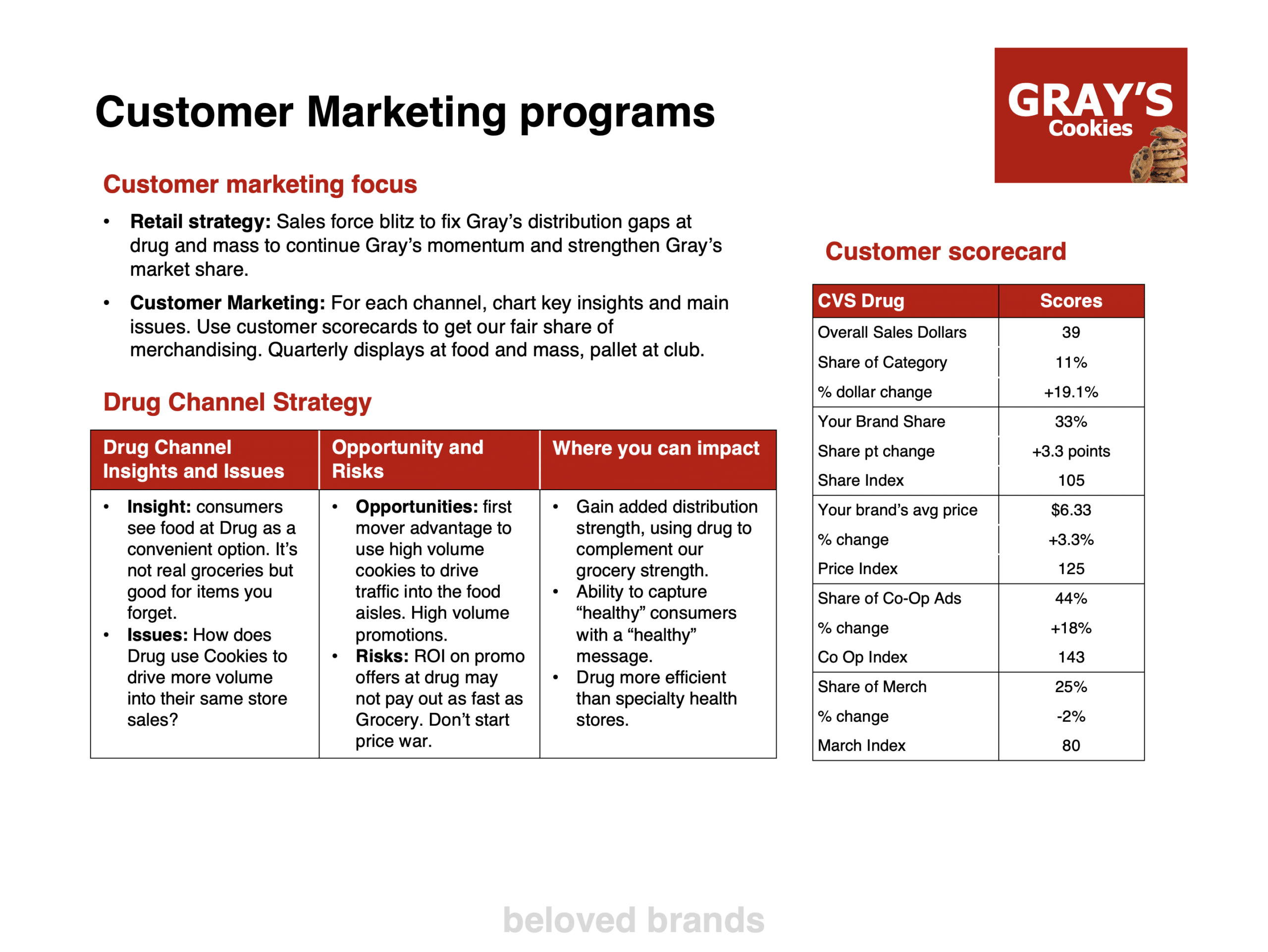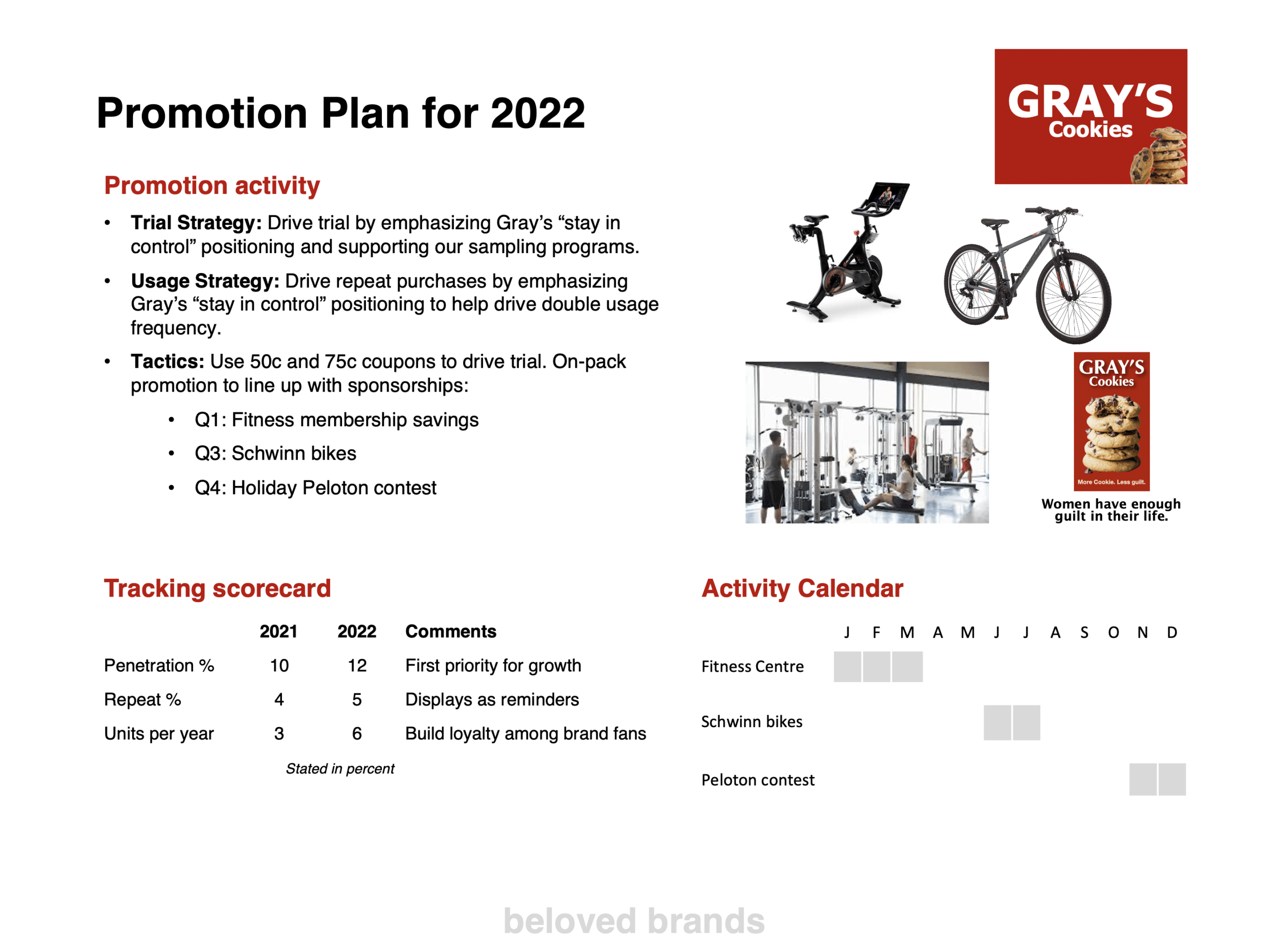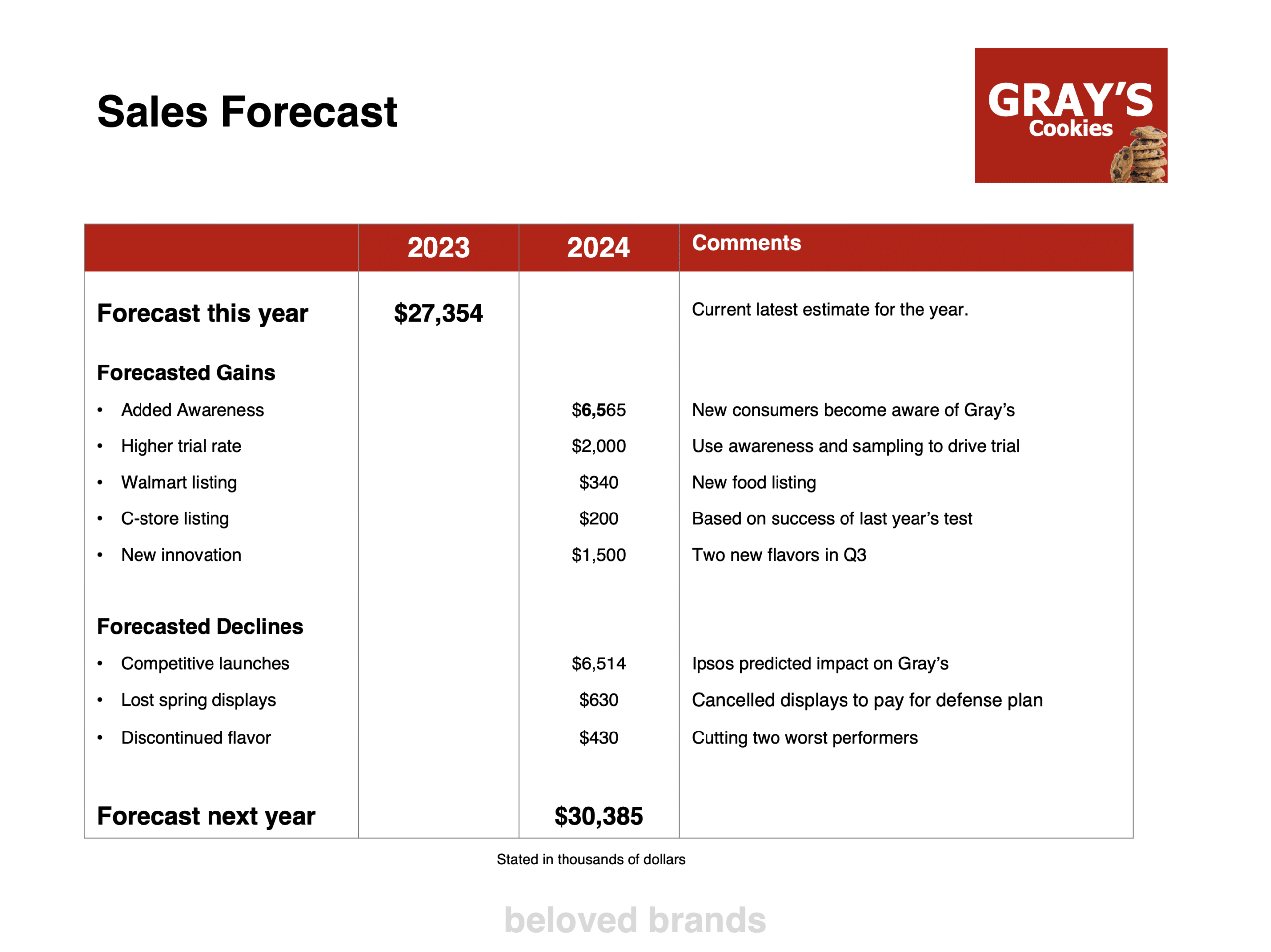When you are learning how to write a marketing plan, make sure that you create a separate marketing tactical plan for each significant investment to ensure everyone has specific instructions for their function, eliminating any room for misinterpretation. The marketing tactical plans should align with your marketing activities and include a Brand Communication Plan, a Product Innovation plan, and a Sales Plan.
Wherever you invest resources, you need a Marketing Tactical Plan that keeps everyone organized
Any marketing execution plan serves as an organizing tool, so everyone has specific marching orders on the particular strategy related to their functional expertise. As you cascade strategies throughout the organization, use our five consumer touchpoints to guide the capabilities you need to invest in to deliver the strategies on your brand.
Brand promise:
- To deliver the brand positioning, create an execution plan for developing a brand book, logos, slogans, look and feel, packaging, content strategy, sponsorships, and the homepage.
Brand story:
- To communicate your brand’s story, look at creative advertising options, as well as paid, earned, shared, and owned media. Align advertising, social media, search, PR, and content management.
Innovation:
- Use execution plans to steer the product development team on new product launches, line extensions, claims, acquisitions, partnerships, market research, and product exploration.
Purchase moment:
- Develop execution plans with your sales team related to specific channels, consumer promotions, coupons, pricing, trade spend, point-of-purchase merchandising, sales materials, account management, sales force deployment, customer marketing, and e-commerce.
Consumer experience:
- Possible execution plans include the creation of service values, service behaviors, employee training, sampling, loyalty programs, events, websites, and influencer programs.
Marketing Tactical Plans - Table of Contents
How to lay out your tactical plan slides in your marketing plans
What to include in your tactical plan slides
Strategy:
- Describe how to use tactics to move consumers along their journey or to tighten their bond with your brand.
Measurement:
Lay out goals, spending, or expected results of the tactics, linking the execution to the overall strategy.
Key visuals:
- Showcase the execution of ads, displays, promotions, or tools you will use.
Calendar:
- The chart allows multiple activities, with any monthly breakouts you can shade in.
Brand Communications Plan
The brand communications plan answers seven questions. These questions steer and inspire the creation of the brand story work, so the brand communications work will establish your brand positioning and motivate consumers to see, think, feel, do, or influence. The plan must answer the following questions:
Using our marketing plan template, your Brand Communications Plan should answer the following questions:
- First, what do we need our advertising to do? (Marketing strategy statement)
- Next, who is our desired consumer target? (Most motivated people to buy what we do)
- Third, what are we selling? (The main consumer benefit we stand behind)
- Fourth, why should they believe us? (Support points to back up the main benefit)
- Then ask, what is our organizing brand idea? (Brand soul, essence, or DNA for the brand)
- What do we want people to see, think, feel, do, or influence? (Desired consumer response)
- Finally, where will our consumers be most receptive to see and act upon our message? (Media plan)
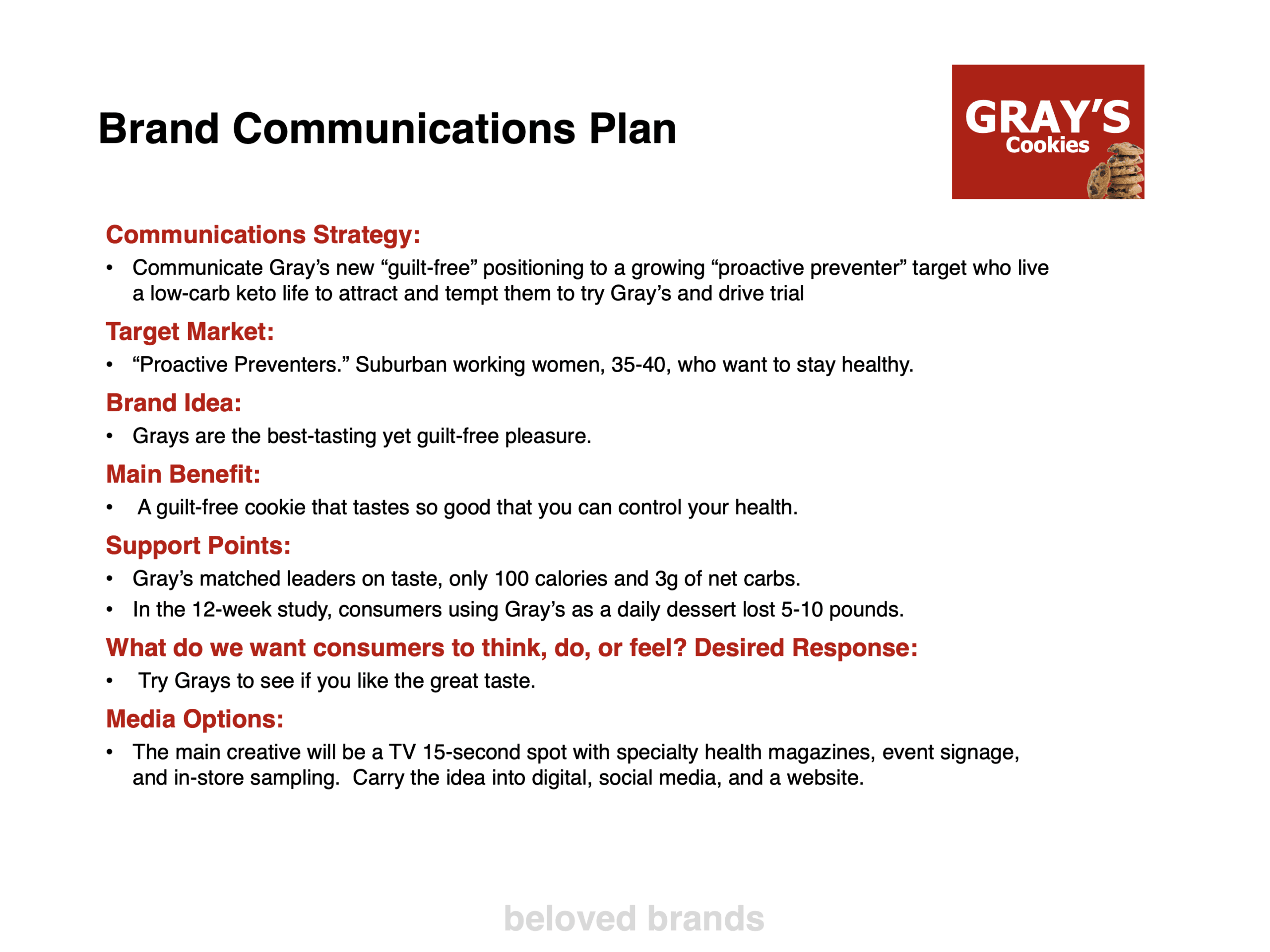
To illustrate, click on the image above of a marketing tactical plan that should be part of your marketing plans.
Tactical Plans to organize your Brand Communications section of your marketing plans
Advertising Plan:
Looks at the creative advertising plan, creative idea, and a media plan that lays out the specific media choices and a media calendar.
Social Media and Search Plan:
Your expertise is key in leveraging social media and specific media choices. The role of paid and organic search is to drive visitors to the website, a task that you are well-equipped to handle.
Events sampling and sponsorship:
Link sampling to point of usage, events that bring your brand to life, and sponsorship to support brand positioning.
Creative Brief:
The details of the creative brief, including strategy, target market, consumer insights, main message, support points, and desired consumer response, help drive the creative message.

Examples of Tactical Plans in the Brand Communications section of your marketing plans
To illustrate, click on the image above of a marketing tactical plan that should be part of your marketing plans.

Innovation Plan
Product Innovation Process
Identify new opportunities
Continually observe and find unmet consumer needs, market trends, and pain points that new product ideas can solve. Use regular brainstorming to build a robust pipeline of ideas.
From the best innovation ideas, develop concepts to test with consumers, measuring new ideas on uniqueness, motivation to purchase, ownability, potential size, and strategic fit with the brand. Listen to consumer feedback to optimize, adjust, or pivot the learning into new ideas.
Build an innovation pipeline
Pushing the best ideas through concept refinement, using market testing and a decision process with management. Approvals include execution plans and milestones from production to launch.
Drive a robust pipeline with a balance of lower-risk launches and higher-risk exploratory ideas. We use our Innovation checklist that lets you capture the key decision-making factors to consider when judging whether innovation will succeed.
Create a go-to-market launch plan
Align with project management, including name, logos, packaging, production, and channels. Build marketing support for advertising, launch presentations, and retail plans.
Innovation Plan
Utilizing the Innovation Plan as part of our marketing tactical plan template helps influence, manage, and direct your product development team, ensuring a focus on brand strategy.
To illustrate, click on the image above of a marketing tactical plan that should be part of your marketing plans.
Tactical Plans to organize your Product Innovation section of your marketing plans
New Products Pipeline:
Five-year map of product innovation ideas categorized based on product extensions, product improvements, new formats, brand stretching, game-changing, or the blue ocean.
New Product Launch Plan:
Go-to-market plan for the launches coming to market in the next year.
Examples of Tactical Plans in the Product Innovation section of your marketing plans
Selling and retail plan
Brand leaders should work side-by-side with the sales team to manage the consumer through the purchase moment. The brand plan should guide the sales team on specific strategies and goals. Given that your sales team owns the selling execution, you must gain the sales team’s alignment and buy-in on the best ways to execute your brand’s strategy through direct selling, retailer management, and e-commerce options. The programs include pricing, distribution focus, shelf management, promotional spending, customer marketing, customer analytics, and specific promotional tools.
Finding the Triple Win – Where Consumers, Retail Customers, and Brand all win
Use a “triple win” to find the ideal retail programs that match up with wins for your channel customer, shared consumer, and brand. Marketers must understand that sales leaders work through relationships and must balance their customers’ strategies with your brand’s desired strategies.
Your channel customers are trying to win in their market, satisfying a base of their consumers through your brands while battling competitors who you may also be going through that customer. Your most successful programs will provide a win for your channel customer, as you will get much more support for your program.
Work collaboratively with your sales team. The worst marketers try to ram their ideas through sales, expecting them to follow your orders. Come up with ideas together. I recommend having quarterly meetings between sales and marketing with a collaborative look at the next 3 months, next 6 months, next 9 months, and next 12 months, focused on merchandising, assortment, promotions, and your brand’s shelf space.
To illustrate, click on the image above of a marketing tactical plan that should be part of your marketing plans.
Tactical Plans to organize your Selling and Retail section of your marketing plans
Customer Marketing programs:
Key account focus with specific insights, issues, and customer scorecards.
Merchandising and In-store Sampling program:
Instore focuses on overall distribution points, shelf placement, merchandising, and in-store sampling.
Promotions Plan:
Tactics related to driving penetration and usage frequency.
Sales Forecast
Start with this year’s latest estimate, add the forecasted gains, and subtract the forecasted declines.
Examples of Tactical Plans in the Selling and Retail section of your marketing plans
To illustrate, click on the image above of a marketing tactical plan that should be part of your marketing plans.
